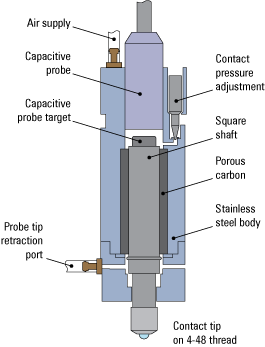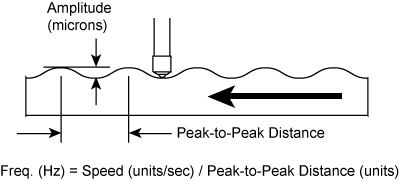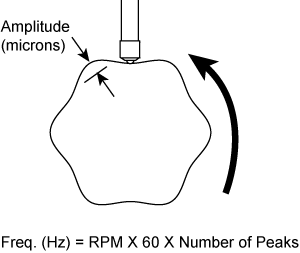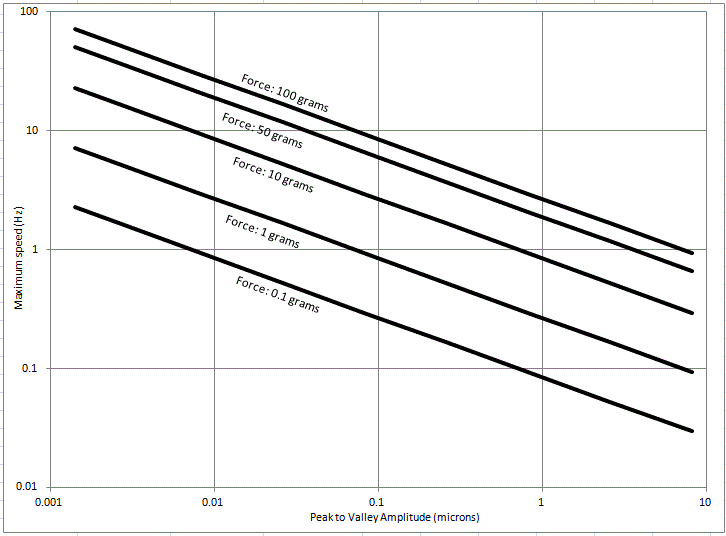Capacitive Sensor TechNote LT03-0027
Copyright © 2013 Lion Precision. www.lionprecision.com
Summary
The speed at which the C-LVDT can respond to movements of the surface it is measuring is determined by the amount of displacement and the adjustment of the contact force. This TechNote provides maximum speeds/displacements for a variety of contact forces.
The calculations below are based on a 6.9 g moving mass of a C-LVDT (5.55 g Shaft, 1.35 g Tip). Shorter, older models ( no longer available) had lower mass and slightly higher response speeds.
C-LVDT Mechanics

The C-LVDT uses air pressure to create a force that extends the contact point from the body of the device. This determines the contact force and is adjusted with a small valve.
Contact Point Speed
The contact force determines the maximum speed at which the target can move away from the probe a given distance and not lose contact.
The calculation requires three datapoints:
- Contact force in grams
- Amplitude of displacement in microns
- Frequency motion in Hertz


C-LVDT Response Speed Chart
This graph charts the curves of maximum speed at which a target can move a given distance (in a sinusoidal pattern) and maintain contact with the contact point for reliable measurements.

